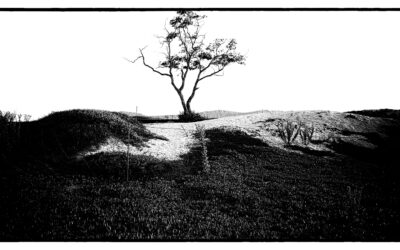The Business Case for Expanding Creative Skills
We have a small reprieve from the infernal heat in Arizona as Hurricane Hillary makes landfall just southwest of us. We are dry, but under the deep overcast, the temps are milder than usual.
Imagine being happy that it only got to 92 degrees today… heh.
I am writing on Medium, as some of you know, but I am not monetizing it. I am finding it difficult to figure out how the site works. Not from a technical vantage, but from a cultural and social one. It is seeming more and more like a Faraday Cage for creativity instead of a megaphone.
Anyway, if you want to see what I have been doing over there, here is the link.
Now, on to the weekly post.
I have been busy working on the Creative Class curriculum and getting it posted to the site. So far the response has been overwhelmingly good. I am so excited about this new way of working.
The one-person business is the next big thing, and seeing so many social media people talking about it makes me realize I am definitely in the right groove here.
The creative industry is as vibrant and dynamic as ever, but there’s a paradigm shift happening. No longer can one trick ponies ride the wave of success for long. Today, there’s a compelling business case for broadening your skill set within the creative space, and here’s why:
- Diversification Equals Stability: Just like an investment portfolio, diversifying your skills means you’re not reliant on one source of income. By offering a wider range of services, you can navigate market fluctuations better and find multiple revenue streams. In uncertain times, this can be a game-changer.
- Meet the Demand for Full-Stack Creatives: Companies, especially startups and SMEs, are on the lookout for ‘full-stack’ creatives. These are individuals who can photograph a product, design the promotional material, write the copy, and perhaps even create a teaser video. By being a one-stop solution, you increase your market appeal exponentially.
- Enhance Collaborative Potential: When you understand multiple facets of the creative process, you can communicate more effectively with other team members, leading to better end results. Knowing the basics of, say, design, can help a writer craft content that complements visual elements seamlessly.
- Stay Relevant in a Rapidly Changing Landscape: The digital realm evolves at breakneck speed. New platforms and mediums emerge regularly. By expanding your skills, you stay ahead of the curve, ensuring you’re never left behind.
- Personal Growth and Satisfaction: Beyond the business aspect, there’s immense personal satisfaction in learning and mastering new skills. It keeps the creative juices flowing, reignites passion, and opens doors to projects you might never have considered.
- Cost Efficiency for Clients: Let’s face it – hiring multiple specialists can be costly for businesses. If you can offer a range of services at a competitive price, you become a more attractive option for clients looking for comprehensive solutions without breaking the bank.
- Future-Proofing Your Career: Automation and AI are on the rise, but the uniquely human touch in creative endeavors remains irreplaceable. By broadening your skill set, you’re not just expanding your offering; you’re ensuring longevity in a world of rapid technological advancements.
Look, while specialization has its merits, the current market landscape leans favorably toward creative polymaths. A blend of practicality and foresight. The more arrows you have in your quiver, the more prepared you are for whatever challenges the future might throw.
Thrive in creativity and business,
Your Friendly Creative Advocate Dude
Two workshops are enrolling now.
Thirty-Day Portfolio Slam where you conceive, produce, and shoot a full portfolio within a month. This is one of my more popular classes. It won’t be offered again until next spring. I have a few openings left.
And The Creative Class is ready for early bird pre-enrollment with a bunch of goodies. We are rocking the Creator Version, and having a blast.

A Diverse Offering Makes You Stronger
There’s real magic in diversity, not just in the communities we build but also in the skills we hone.
Each of you, as artists, possesses a unique voice within a genre. But what happens when you begin to play at the intersections of these genres?
A whole new world unfolds.
Let’s take a look:
- From Photographer to Writer:
- Start with Captions: Before delving deep, begin with captions. What story does the image tell? Can you put it into words?
- Journal the Journey: Every photo shoot, every trip, every candid moment has a backstory. Document it. Before you know it, you’ll have a treasure trove of narratives.
- Collaborate: Work with writers. Understand their process, their way of seeing the world. The synergy between visuals and words can be enlightening.
- From Designer to Motion Graphics:
- Animate Elements: Begin with simple animations. How can a design element move? Maybe it’s just a subtle transition or a playful hover effect.
- Tutorials & Courses: There’s a wealth of knowledge online. Platforms like Skillshare or Udemy offer courses that can introduce you to the basics.
- Seek Inspiration: Platforms like Vimeo or Behance showcase incredible motion graphics work. Observe, learn, and let yourself be inspired.
- From Writer to Photography:
- Visual Narratives: Use your writing skills to craft a story, then capture it. It can be a single moment or a series.
- Documentary Approach: Write about events, people, or places and complement it with photography. Let the visuals and words dance together.
- Photo Essays: Create a blend of visuals and narratives. This not only sharpens your photography skills but also gives depth to your writing.
- From Motion Graphics to Design:
- Still Frames: Extract stills from your motion work. Analyze them. How would you improve its design?
- Storyboards: These are essentially designs. Before animating, create a storyboard. It hones your design thinking and lays a solid foundation for motion.
- Collaborate: Work closely with designers. Understand their perspective, their choices. It will only enrich your motion graphics.
Now, let’s blend these threads together.
Why?
To build a strong, cohesive, powerful business offering.
When you integrate photography, design, writing, and motion graphics, you’ve gone beyond just offering services. You’re now offering experiences.
You’re a storyteller who uses multiple mediums, creating layered, rich narratives that resonate deeply with audiences, clients, and consumers.
Brands and businesses are no longer looking for mere service providers.
They demand visionaries who can encapsulate the essence of their brand in diverse and exciting ways.
Master these intersections and you not only diversify your portfolio but also amplify your market value.
14 TRAITS OF THE MOST SUCCESSFUL PHOTOGRAPHERS: SELINA MAITREYA
14 TRAITS OF THE MOST SUCCESSFUL PHOTOGRAPHERS SELINA MAITREYA AND DON GIANNATTIWe had a wonderful meeting with Selina Maitreya today. She gave us her list of qualities that all of the successful photographers she knows posess. They Show Up and : / Are talented /...
THESE SIX MINDSETS CAN DESTROY YOUR BUSINESS IN 5, 4, 3…
The 6 Worst Mindsets a Creative Photographer Can Have Regarding Their Art and Business Creativity and business might seem worlds apart for many photographers. After all, the pure artistic expression of photography is often thought to be free from the constraints of...
USP VS POV: WHICH IS BETTER?
How to find your USP or UPOV. Over at my Substack, we discussed the divide forming between those advocating USPs and POV (I refer to them as UPOVs) In a nutshell: POV vs. USP: The Power Players in Branding Let's take a whirlwind tour through the buzzing world of...
DISCOVERING YOUR PHOTOGRAPHIC STYLE BY LOOKING BACK
Discovering Your Photographic Style by Looking Back at Your Favorite Work Everyone, from budding photographers to professionals, seeks a distinctive style that sets their work apart. But how do you discover that unique touch? One powerful method is to look back at...
5 THOUGHTS ON CREATIVITY
Unveiling the Mysteries of Creativity: A Field Guide Hey, you wonderful, marvelous creatives and visionary photographers! Let's get into the delightful world of creativity. It’s a complex, fascinating process that involves our whole brain. So, let’s uncover some...
15 PHOTO ASSIGNMENTS GUARANTEED TO BRING YOU PEACE
Whether with a camera phone or a big DSLR, these short assignments can bring you some well-earned peace. Just a snap for the shadows and light. You know how sometimes we get a little funky about not taking a photograph for way too long? Of course, that time can...






